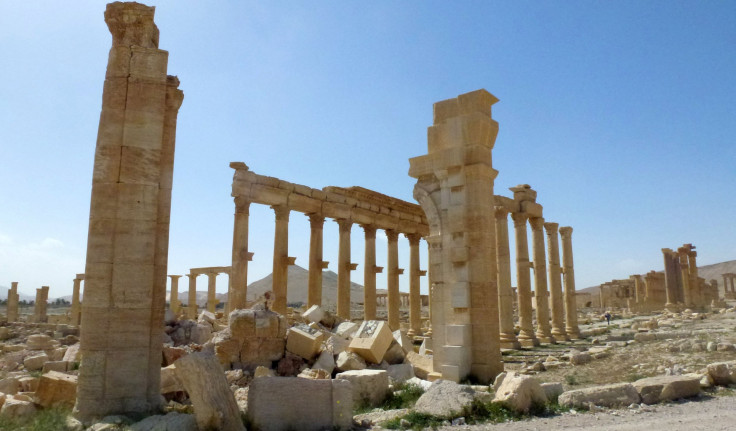Can Palmyra Be Saved? After ISIS Occupation, Expert Doubtful Damaged Syrian Ruins Can Be Rebuilt

The Islamic State group was ousted from Palmyra over the weekend, but the ancient Syrian city’s future could still be bleak. According to one expert, the 10 months the extremist organization known as ISIS occupied the cultural center with archaeological ruins left the city irreversibly damaged.
“I am very doubtful about the capacity, even with international aid, of rebuilding the site at Palmyra,” Annie Sartre-Fauriat, a Syrian historian, told Agence France-Presse Monday. “When I hear that we are going to reconstruct the Temple of Bel, that seems illusory. We are not going to rebuild something that has been reduced to dust. Rebuild what? A new temple? I think there are probably other priorities in Syria before rebuilding ruins.”
Palmyra, a Unesco World Heritage site containing ruins from the first and second centuries, fell to ISIS’ control last May. Over time, the fighters demolished antiquities there, including temples and statues, often publishing propaganda bragging about the destruction, according to CNN.
When Syrian and Russian forces took back Palmyra this past weekend, Syrian President Bashar Assad vowed to restore the city to its former glory. “Palmyra was demolished more than once through the centuries,” he said, “... and we will restore it anew so it will be a treasure of cultural heritage for the world,” Reuters reported.
Whether that’s possible was unclear as of Monday. Unesco wrote in a news release that as soon as the city was cleared of mines, it would be ready to evaluate the damage and repair what it could. Maamoun Abdulkarim, the chief of antiquities, told AFP the “surprisingly intact” city could be fixed up within five years. But Sartre-Fauriat rejected that assessment, saying Palmyra had been “totally vandalized.”
Amr Al-Azm, a Middle East history and anthropology expert at Shawnee State University in Ohio, told the Wall Street Journal that he thought restoration was “a long way off.” The architecture that can be rebuilt won’t end up looking like it used to, he said.
“It will not be the same,” Azm said of a Palmyra amphitheater. “What you will have is something completely different.”
© Copyright IBTimes 2024. All rights reserved.






















